Gaul › Visual Chronology of Roman Emperors: Augustus to Constantine » Origins and History
Articles and Definitions › Contents
- Gaul › Ancient History
- Visual Chronology of Roman Emperors: Augustus to Constantine › Antique Origins
Ancient civilizations › Historical places, and their characters
Gaul › Ancient History
Definition and Origins
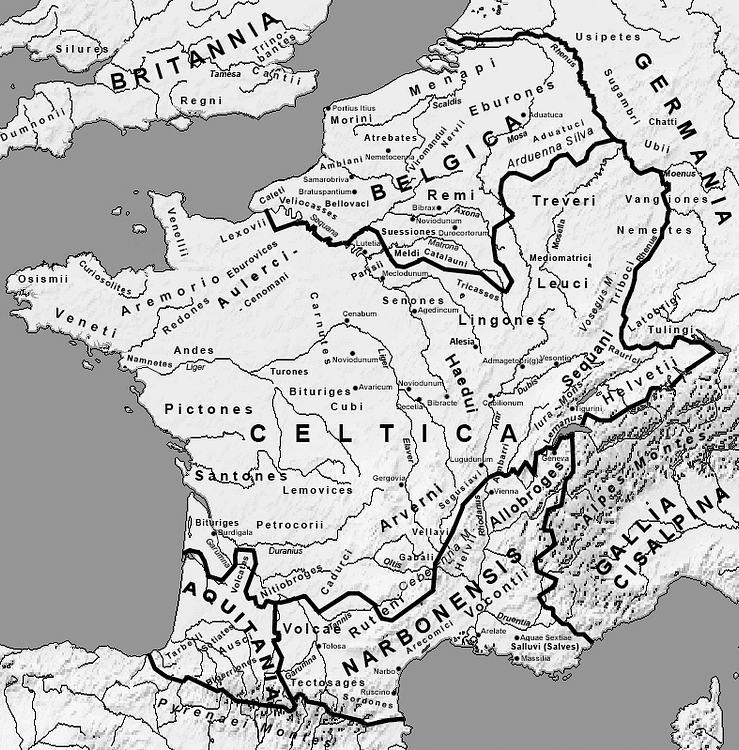
Gaul (Latin Gallia, French Gaule) is the name given by the Romans to the territories where the Celtic Gauls (Latin Galli, French Gaulois) lived, including present France, Belgium, Luxemburg and parts of the Netherlands, Switzerland, Germany on the west bank of the Rhine, and the Po Valley, in present Italy. The ancient limits of Gaul were the Rhine River and the Alps on the east, the Mare Nostrum (Mediterranean Sea), the Po Valley and the Pyrenees on the south, and the Atlantic Ocean on the west and North. Before the Roman conquest by Julius Caesar (58-51 BC), the name “Gaul” corresponded to a cultural and military area founded on a common religion and federations of peoples who though that they had a common origin. This common origin probably dates back to 8th century, when migrants groups of the Bronze Age Urnfield culture spread slowly across the area of the future territory of Gaul. About 390 BC, the Gauls invaded and sacked Rome. In 222 BC, Cisalpine Gaul (the region between the Alps and the Po Valley) was conquered by the Romans. The best description we know about the pre- Roman Gaul is in the first chapter of the Commentarii de Bello Gallico, of Caius Julius Caesar. It is clearly a Roman point of view of the Gallic realities:
All Gaul is divided into three parts, one of which the Belgae inhabit, the Aquitani another, those who in their own language are called Celts, in ours Gauls, the third. All these differ from each other in language, customs and laws. The river Garonne separates the Gauls from the Aquitani; the Marne and the Seine separate them from the Belgae. Of all these, the Belgae are the bravest, because they are farthest from the civilisation and refinement of [our] Province, and merchants least frequently resort to them and import those things which tend to effeminate the mind; and they are the nearest to the Germans, who dwell beyond the Rhine, with whom they are continually waging war ; for which reason the Helvetii also surpass the rest of the Gauls in valour, as they contend with the Germans in almost daily battles, when they either repel them from their own territories, or themselves wage war on their frontiers. One part of these, which it has been said that the Gauls occupy, takes its beginning at the river Rhone: it is bounded by the river Garonne, the ocean, and the territories of the Belgae: it borders, too, on the side of the Sequani and the Helvetii, upon the river Rhine, and stretches towards the north. The Belgae rise from the extreme frontier of Gaul, extend to the lower part of the river Rhine; and look towards the north and the rising sun. Aquitania extends from the river Garonne to the Pyrenaean mountains and to that part of the ocean which is near Spain: it looks between the setting of the sun and the north star.
After Julius Caesar had conquered Gaul, the territorial organization of Gaul as part of the Roman Empire was concluded by Emperor Augustus from 27 to 12 BC: Respecting the ancient organization described by Julius Caesar, Augustus created three Roman Provinces: Gallia Belgica, Gallia Lugdunensis and Aquitania. In the south, the old Roman Provincia, to which Massilia was added, was renamed Gallia Narbonensis. The territories bordering the Rhine River were combined into two military areas, which under Domitian became the provinces of Upper and Lower Germania. For about 200 years the Roman peace ( Pax romana ) was maintained, with the exception of some local revolts and civil troubles. The Germanic incursions of the 3rd century AD marked the end of this epoch.
Visual Chronology of Roman Emperors: Augustus to Constantine › Antique Origins
Ancient Civilizations
THE JULIO-CLAUDIAN DYNASTY
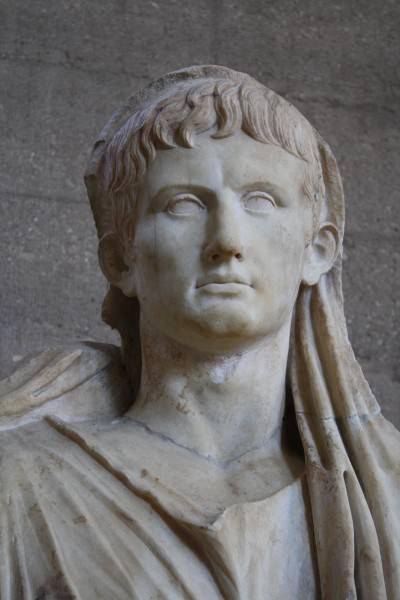
Augustus
Augustus 16 Jan 27 BCE - 19 Aug 14 CE

Tiberius
Tiberius 18 Sep 14 CE - 16 Mar 37 CE

Caligula
Caligula 18 Mar 37 CE - 24 Jan 41 CE

Claudius
Claudius 25 Jan 41 CE - 13 Oct 54 CE

Roman Emperor Nero
Nero 13 Oct 54 CE - 11 Jun 68 CE

Roman Emperor Galba
Galba 8 Jun 68 CE - 15 Jan 69 CE

Roman Emperor Otho
Otho 15 Jan 69 CE - 16 Apr 69 CE
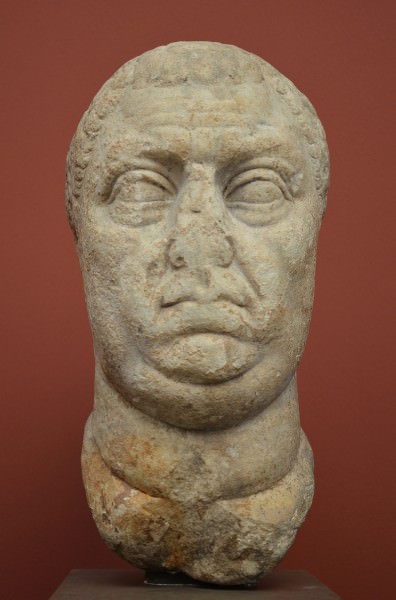
Roman Emperor Vitellius
Vitellius 17 Apr 69 CE - 20 Dec 69 CE
THE FLAVIAN DYNASTY

Roman Emperor Vespasian
Vespasian 26 Dec 69 CE - 23 Jun 79 CE

Titus
Titus 24 Jun 79 CE - 13 Sep 81 CE
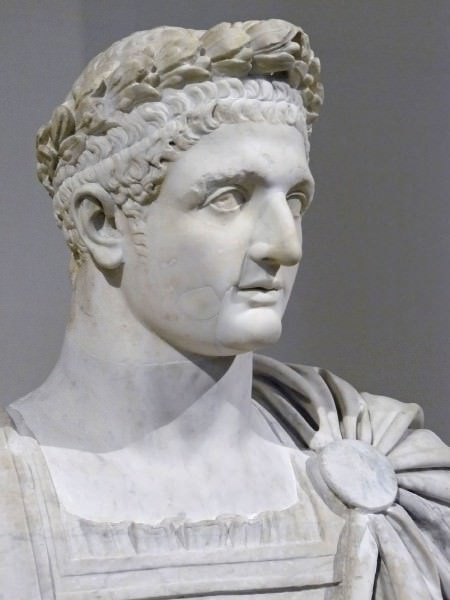
Roman Emperor Domitian
Domitian 14 Sep 81 CE - 18 Sep 96 CE
THE ADOPTIVE EMPERORS

Nerva
Nerva 18 Sep 96 CE - 27 Jan 98 CE

Trajan
Trajan 28 Jan 98 CE - 7 Aug 117 CE

Hadrian
Hadrian 11 Aug 117 CE - 10 Jul 138 CE

Antoninus Pius
Antoninus Pius 10 Jul 138 CE - 9 Mar 161 CE

Roman Emperor Lucius Verus
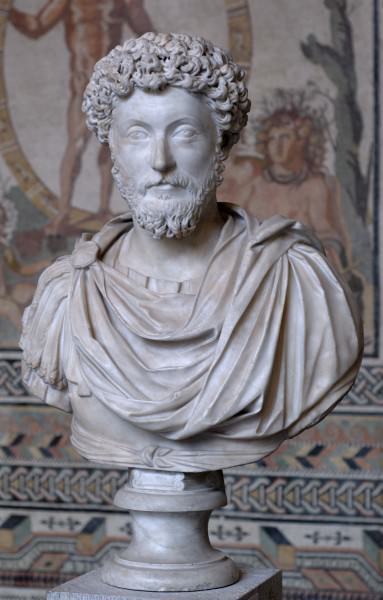
Roman Emperor Marcus Aurelius
Marcus Aurelius 7 Mar 161 CE - 17 Mar 180 CE

Commodus
Commodus 17 Mar 180 CE - 31 Dec 192 CE

Pertinax Sestertius
Pertinax 1 Jan 193 CE - 28 Mar 193 CE

Didius Julianus
Didius Julianus 28 Mar 193 CE - 1 Jun 193 CE

Pescennius Niger
Pescennius Niger 193 CE - 194 CE
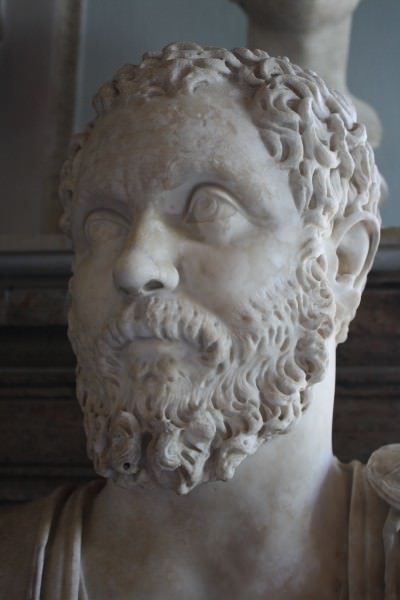
Clodius Albinus
Clodius Albinus 193 CE - 197 CE
THE SEVERAN DYNASTY

Septimius Severus
Septimius Severus 9 Apr 193 CE - 4 Feb 211 CE

Geta
Geta 211 CE - 212 CE

Roman Emperor Caracalla
Caracalla Dec 211 CE - 8 Apr 217 CE

Macrinus
Macrinus 11 Apr 217 CE - 8 Jun 218 CE

Elagabalus
Elagabalus 8 Jun 218 CE - 11 Mar 222 CE

Severus Alexander
Alexander Severus 13 Mar 222 CE - 18 Mar 235 CE
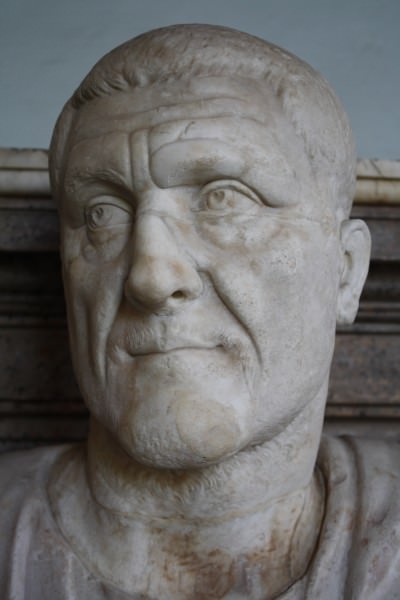
Maximinus I
Maximinus Thrax Mar 235 CE - May 238 CE

Gordian I
Gordian I 238 CE

Gordian III
Gordian III 238 CE - 244 CE
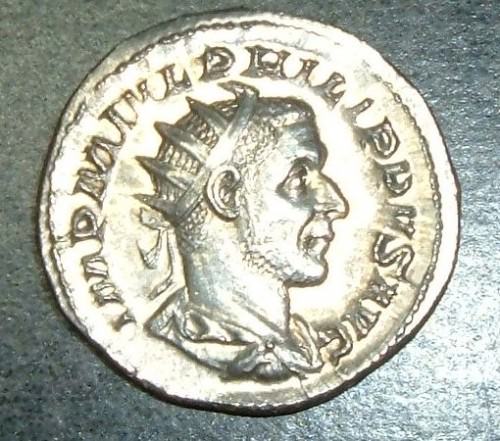
Roman Coin of Philip the Arab
Philip the Arab 244 CE - 249 CE

Decius
Decius 249 CE - 251 CE

Trebonianus Gallus
Trebonianus Gallus 251 CE - 253 CE

Valerian I
Valerian 253 CE - 260 CE

Gallienus
Gallienus 253 CE - 268 CE
THE GALLIC EMPERORS
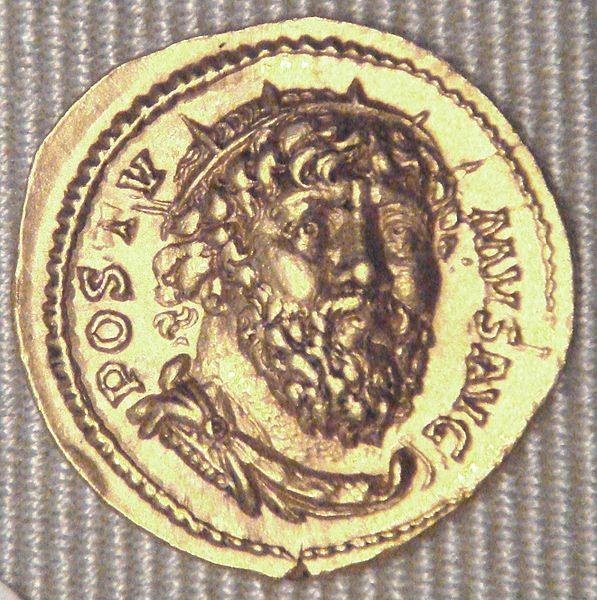
Coin Depicting Roman Emperor Postumus
Postumus 259 CE - 268 CE

Victorinus
Victorinus 268 - 270 CE

Coin Depicting Roman Emperor Tetricus
Tetricus 270 CE - 273 CE
THE ILLYRIAN EMPERORS

Roman Emperor Claudius II
Claudius II Gothicus 268 CE - 270 CE
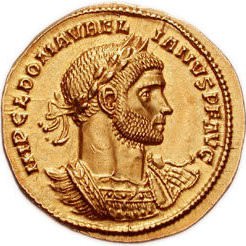
Coin Depicting Roman Emperor Aurelian
Aurelian Sep 270 CE - c. Sep 275 CE

Marcus Claudius Tacitus
Tacitus 275 CE - 276 CE

Probus
Probus 276 CE - 282 CE

Carus
Carus 282 CE - 283 CE

Numerian
Numerian 283 CE - 284 CE

Carinus
Carinus 283 CE - 285 CE

Roman Emperor Diocletian
Diocletian 284 CE - 305 CE
THE TETRARCHY

Maximianus

Constantius Chlorus
Constantius 305 - 306 CE (West)
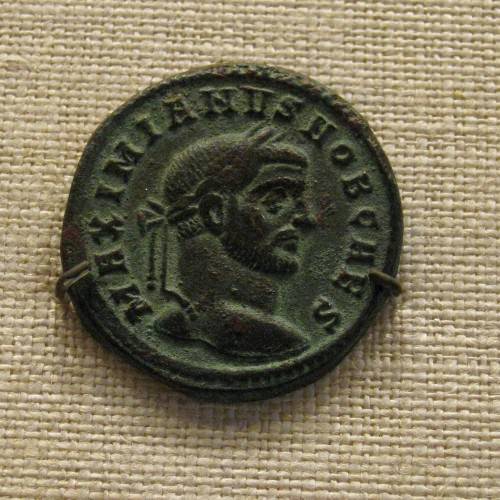
Galerius
Galerius 305 CE - 311 CE (East)

Maxentius
Maxentius 306 CE -312 CE (West)

Licinius
Licinius 308 CE - 324 CE (East)

Constantine I
Constantine I 306-337 CE
LICENSE:
Article based on information obtained from these sources:with permission from the Website Ancient History Encyclopedia
Content is available under License Creative Commons: Attribution-NonCommercial-ShareAlike 3.0 Unported. CC-BY-NC-SA License